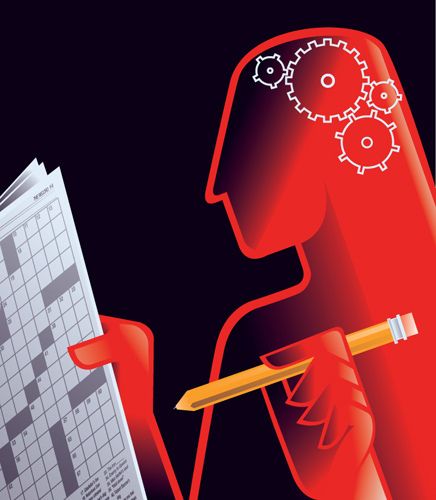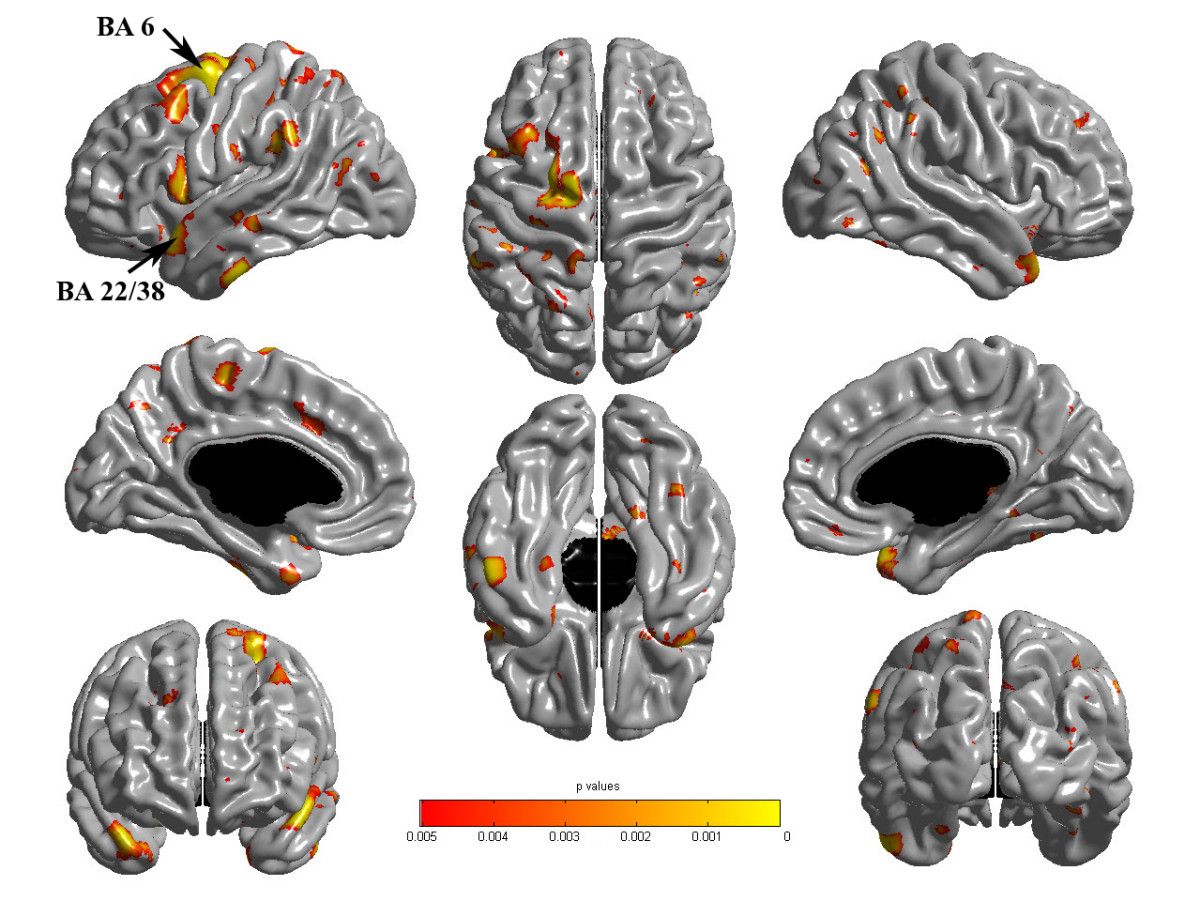
Each of the brain’s 100 billion neurons has somewhere in the realm of 7,000 connections to other neurons, creating a tangled roadmap of about 700 trillion possible turns. But thinking of the brain as roads makes it sound very fixed—you know, pavement, and rebar, and steel girders and all. But the opposite is true: at work in our brains are never-sleeping teams of Fraggles and Doozers who rip apart the roads, build new ones, and are constantly at work retooling the brain’s intersections. This study of Fraggles and Doozers is the booming field of neuroplasticity: how the basic architecture of the brain changes over time. Scientist, neuro math geek, Science Channel personality and accomplished author Garth Sundem writes for ScriptPhD.com about the phenomenon of brain training and memory.
Certainly the brain is plastic—the gray matter you wake up with is not the stuff you take to sleep at night. But what changes the brain? How do the Fraggles know what to rip apart and how do the Doozers know what to build? Part of the answer lies in a simple idea: neurons that fire together, wire together. This is an integral part of the process we call learning. When you have a thought or perform a task, a car leaves point A in your brain and travels to point B. The first time you do something, the route from point A to B might be circuitous and the car might take wrong turns, but the more the car travels this same route, the more efficient the pathway becomes. Your brain learns to more efficiently pass this information through its neural net.
A simple example of this “firing together is wiring together” is seen in the infant hippocampus. The hippocampus packages memories for storage deeper in the brain: an experience goes in and a bundle comes out. I think of it like the pegboard at the Seattle Science Center: you drop a bouncy ball in the top and it ricochets down through the matrix of pegs until exiting a slot at the bottom. In the hippocampus, it’s a defined path: you drop an experience in slot number 5,678,284 and
it comes out exit number 1,274,986. How does the hippocampus possibly know which entrance leads to which exit? It wires itself by trial and error (oversimplification alert…but you get the point). Infants constantly fire test balls through the matrix and ones that reach a worthwhile endpoint reinforce worthwhile pathways. These neurons fire together, wire together, and eventually the hippocampus becomes efficient. It’s just that easy. (And because it’s so easy, researchers aren’t far away from creating an artificial hippocampus.)

Now let’s think about Sudoku. The first time you discover which missing numbers go in which empty boxes, you do so inefficiently. But over time, you get better at it. You learn tricks. You start to see patterns. You develop a workflow. And practice creates efficiency in your brain as neurons create the connections necessary for the quick processing of Sudoku. This is true of any puzzle: your plastic brain changes its basic architecture to allow you to complete subsequent puzzles more efficiently. Okay, that’s great and all, but studies are finding that the vast majority of brain-training attempts don’t generalize to overall intelligence. In other words, by doing Sudoku, you only get better at Sudoku. This might gain you street cred in certain circles, but it doesn’t necessarily make you smarter. Unfortunately, the same is true of puzzle regiments: you get better at the puzzles, but you don’t necessarily get smarter in a general way.
That said, one type of puzzle offers some hope: the crossword. In fact, researchers at Wake Forest University suggest that crossword puzzles strengthen the brain (even in later years) the same way that lifting weights can increase muscle strength. Still, it remains true that doing the crossword only reinforces the mechanism needed to do the crossword. But the crossword uses a very specific mechanism: it forces you to pull a range of facts from deep within your brain into your working memory. This is a nice thing to get better at. Think about it: there are few tasks that don’t require some sort of recall, be it of facts or experiences. And so training a nimble working memory through crosswords seems a more promising regiment than other single type of brain training exercise.
This is borne out by research. A Columbia University study published in 2008 found that training working memory increased overall fluid intelligence. So the answer to this article’s title question is yes, brain training is very real. (Only, there’s lot of schlock out there.) But hidden in this article lies the new key that many researchers hope will point the way to brain training of the future. Any ONE brain training regiment only makes you better at the one thing being trained. But NEW EXPERIENCES in general, promise a varied and continual rewiring of the brain for a fluid and ever-changing development of intelligence. In other words, if you stay in your comfort zone, the comfort zone decays around you. In order to build intelligence or even to keep what you have, you need to be building new rooms, outside your comfort zone. If you consume a new media source in the morning, experiment with a new route to work, eat a new food for lunch, talk to a new person, or…try a NEW puzzle, you’re forcing your brain to rewire itself to be able to deal with these new experiences—you’re growing new neurons and forcing your old ones to scramble to create new connections.

Here’s what that means for your brain-training regimen: doing a puzzle is little more than busywork; it’s the act of figuring out how to do it that makes you smarter. Sit down and read the directions. If you understand them immediately and know how you should go about solving a puzzle, put it down and look for something else…something new. It’s not just use it or lose it. It’s use it in a novel way or lose it. Try it. Your brain will thank you for it.
Garth Sundem works at the intersection of math, science, and humor with a growing list of bestselling books including the recently released Brain Candy: Science, Puzzles, Paradoxes, Logic and Illogic to Nourish Your Neurons, which he packed with tasty tidbits of fun, new experiences in hopes of making readers just a little bit smarter without boring them
into stupidity. He is a frequent on-screen contributor to The Science Channel and has written for magazines including Wired, Seed, Sand Esquire. You can visit him online or follow his Twitter feed.
*****************
ScriptPhD.com covers science and technology in entertainment, media and advertising. Hire our consulting company for creative content development.
Subscribe to free email notifications of new posts on our home page.

I’ve read that it’s clinically proven but I’ve also tried it myself, and for me it works.
I use scientifically designed brain games everyday and they work for me.
Here is an article that sites and several studies that indicate the right kind of brain training can be effective. https://www.realbraintraining.com/2012/04/does-lumosity-work.html.
There is also information on how to get a free trial of the best brain training games on the internet so you can decide for yourself.
My site is https://www.realbraintraining.com. You can follow my progress with brain training and get all my tips and tricks there.
TJ